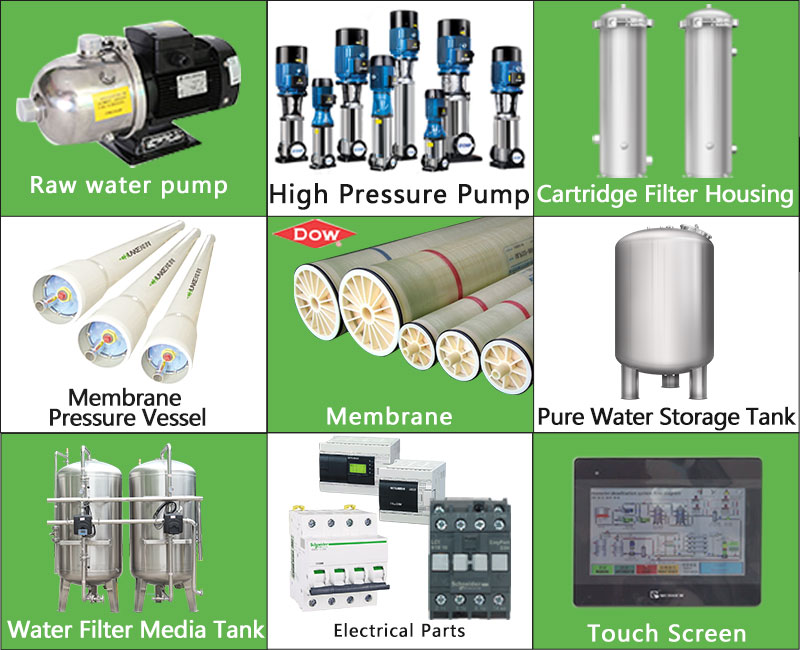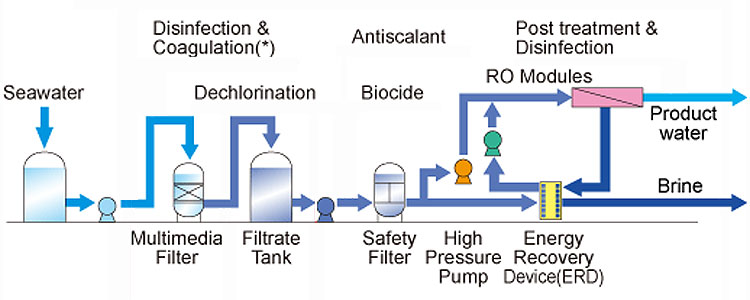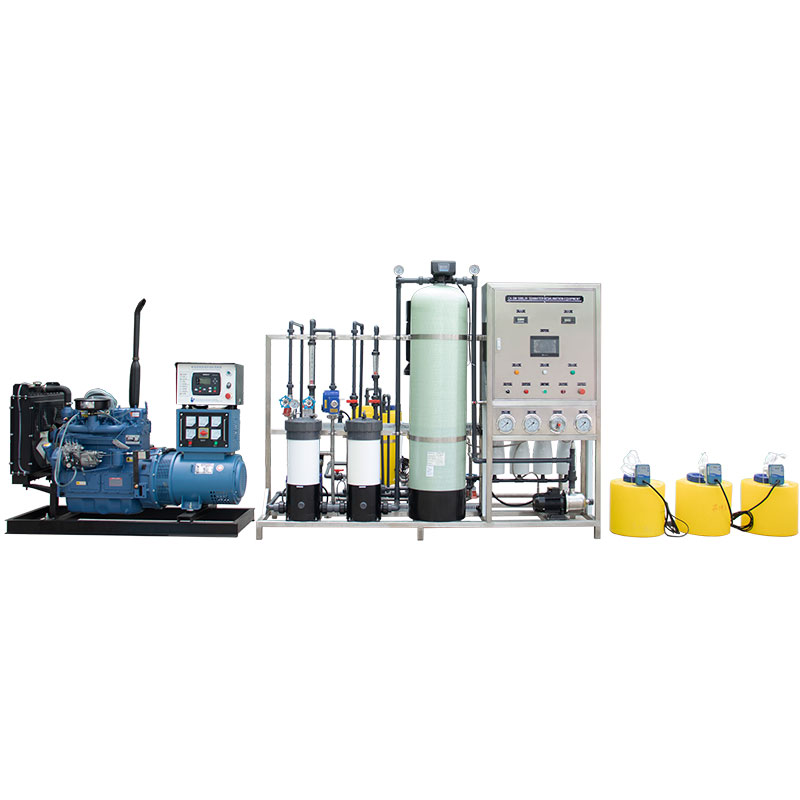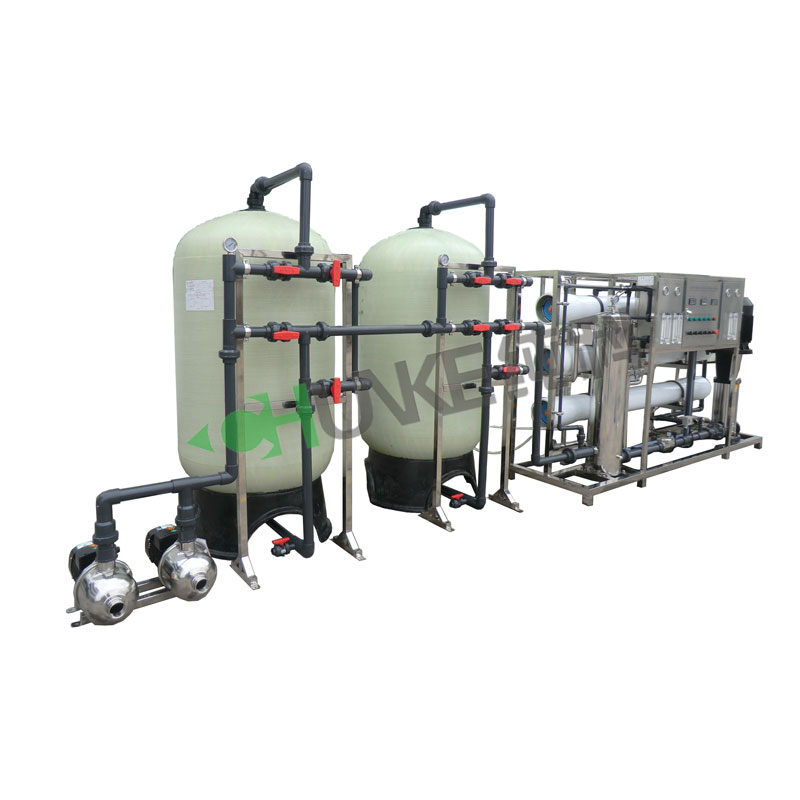Can the water filtered by the seawater RO system be used to raise fish?
With the continuous development of water treatment technology, the seawater reverse osmosis system (SWRO) has become one of the main technologies for desalinating seawater and producing drinkable fresh water. This system removes salt and other impurities from seawater through semi-permeable membrane filtration to produce relatively pure water.
However, with the widespread application of this technology in the fields of home, agriculture and industry, many people have begun to consider: Is this water filtered by the seawater reverse osmosis system suitable for fish farming, especially freshwater fish? What are the requirements of freshwater fish for water quality, and will the use of this water affect their health and growth?
This article will explore this issue in detail from multiple angles to help aquarium enthusiasts and breeders understand how to provide an ideal living environment for freshwater fish.

What are the characteristics of water filtered by the seawater reverse osmosis system?
The working principle of the seawater reverse osmosis system is to use high pressure to pass seawater through a semi-permeable membrane to remove salt, microorganisms and other dissolved substances from it, and finally produce pure fresh water. Due to its excellent filtration effect, this technology is widely used in seawater desalination and drinking water production.
Secondly, the water filtered by the seawater reverse osmosis system contains almost no salt and other dissolved substances, and the water quality is very pure. Usually, the total dissolved solids (TDS) content of the treated water is extremely low, even close to the level of pure water. Although the water is very pure, this water contains almost no minerals commonly found in nature, such as calcium, magnesium, potassium, etc. These minerals play an important role in the health and growth of fish in natural water bodies.
In addition, since most of the dissolved substances are removed, the pH value of reverse osmosis water tends to be low and slightly acidic. In addition, due to its weak buffering capacity, the pH value is easily affected by external factors. This may bring certain challenges to fish that are sensitive to pH, especially freshwater fish.
What kind of water quality do freshwater fish need?
Freshwater fish live in a relatively stable water environment, and changes in water quality have a direct impact on their health. The following are some key requirements for water quality for freshwater fish:
1. Stable pH value
Different species of freshwater fish have different requirements for pH value, but the suitable range is usually between 6.5 and 7.5. Fluctuations in pH value can cause increased physiological stress in fish, which in turn affects their immune system and growth rate. For example, tropical fish usually require water that is close to neutral, while some special species may require slightly acidic or alkaline water.
2. Appropriate hardness
Freshwater fish also have certain requirements for water hardness (usually determined by calcium and magnesium ions in the water). Water hardness is usually expressed in GH (total hardness) and KH (carbonate hardness). Most freshwater fish are suitable for living in water with a GH value of 4 to 12 dGH. Too low or too high hardness will have a negative impact on the health of fish, such as causing abnormal growth of bones and scales.
3. Adequate minerals
Freshwater fish need an appropriate amount of minerals to maintain normal physiological functions. Minerals such as calcium, magnesium, and potassium in water are essential for fish metabolism, bone development, and overall health. Lack of these minerals may cause fish to have problems such as growth stagnation and decreased immunity.
4. Good water quality management
In addition to chemical composition, freshwater fish also require low ammonia nitrogen, low nitrite, and low nitrate for water quality. These substances are toxic to fish at high concentrations, so they need to be controlled by regular water changes, proper feeding, and a good filtration system.

Is seawater reverse osmosis water suitable for freshwater fish?
After understanding the characteristics of water filtered by the seawater reverse osmosis system and the water quality requirements of freshwater fish, we can analyze whether this water is suitable for freshwater fish. The high purity of reverse osmosis water means that it lacks necessary minerals, which is not good for freshwater fish. Freshwater fish rely on minerals in water to maintain physiological functions, such as calcium, which plays an important role in bone development and health. Therefore, directly using reverse osmosis water to raise fish may cause malnutrition in fish and affect their health.
Secondly, because the pH value of reverse osmosis water is low and unstable, direct use may cause the water body to become too acidic, affecting the living environment of fish. Freshwater fish living in acidic water for a long time may experience stress reactions, which in turn affects their health. Although seawater reverse osmosis water is too pure to be used directly for fish farming, it can be made into an environment suitable for fish life through proper adjustment and treatment. For example, adding mineral supplements can increase the hardness and mineral content of water and stabilize the pH value, thus making the water quality closer to natural water bodies.

How to convert reverse osmosis water into water suitable for freshwater fish?
If you use a seawater reverse osmosis system to desalinate seawater at home and plan to use this water for fish farming, you can add mineral supplements, which usually contain elements such as calcium, magnesium, and potassium, which can effectively increase the total hardness (GH) and carbonate hardness (KH) of the water, thereby improving the water quality and meeting the needs of freshwater fish. Then, using a pH regulator can help stabilize the pH value of the reverse osmosis water to ensure that the water quality is within the range suitable for fish. If the pH value is too low, you can neutralize the acidity by adding alkaline substances (such as sodium bicarbonate) to raise the pH value to a suitable range.
Another method is to mix reverse osmosis water with an appropriate amount of tap water or well water. Since tap water and well water usually contain an appropriate amount of minerals, the purity of the reverse osmosis water can be neutralized by mixing, thereby obtaining water quality suitable for fish farming. However, when using this method, you need to pay attention to whether the chlorine or other disinfectants in the tap water are harmful to fish, and dechlorination treatment is required if necessary. Regardless of the method used, regular monitoring of water quality is an important measure to ensure the health of fish. Using a water quality test kit to test key parameters such as pH, hardness, ammonia nitrogen, nitrite, nitrate, etc., and adjusting the water quality in a timely manner based on the test results can effectively prevent fish diseases caused by water quality problems.





